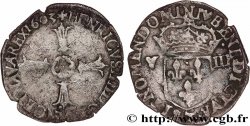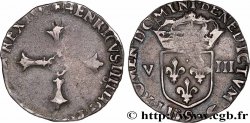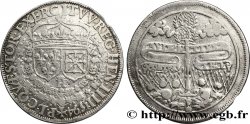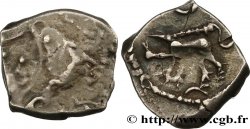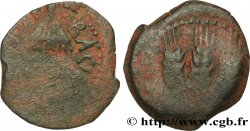Live auction - bry_799307 - HENRY IV Écu d'or au soleil, 2e type 1591 Tours
得先注册又得到批准才可以报价。为了报价注册. 客户应该得到公司允许,那种过程需要 48 个小时。别等出售结束那一天才登记。您报价的话等于您赞成买那物品,而且按« 保价 » 证明您接受 cgb.fr 因特网拍卖使用法.
报价时只可以出全数值欧元总额。物品描述也说明销售结束时间,结束后出价都不会生效。 报价命令转达有时变动,等到最后秒钟增加否决的可能会。想多了解的话请注意 因特网拍卖常问
最高出价方将支付18%的不含税的拍卖费用
最高出价方将支付18%的不含税的拍卖费用
| 估算 : | 10 000 € |
| 价格 : | 5 000 € |
| 最高出价 : | 5 807 € |
| 拍卖结束日期 : | 06 June 2023 17:43:52 |
| 竞拍人 : | 1 竞拍人 |
种类 Écu d'or au soleil, 2e type
日期: 1591
铸币厂名称/城市 Tours
铸币数量 1841
材质 gold
纯度、成色(用角密度) 958 ‰
直径 23,5 mm
模子方针 12 h.
重量 3,35 g.
侧面 Lisse
稀少度 INÉDIT
关于品相的说明
Écu d’or frappé sur un flan un peu court, irrégulier et voilé. Monnaie ayant été nettoyée et présentant des hairlines dans les champs. Présence de quelques faiblesses de frappe
出版目录中的项代码 :
正面
正面的文字 (SOLEIL) HENRICVS. IIII. D: G. FRANC. ET. NAVA. REX (MM): , (LÉGENDE COMMENÇANT À 12 HEURES).
正面的说明书 Écu de France couronné.
正面的翻译 (Henri III, par la grâce de Dieu, roi de France et de Navarre).
背面
背面的文字 (MG) CHRS. VINCIT. CHRS. REGNAT. CHR IMP 1591.
背面的说明书 Croix formée de quatre H fleurdelisées, avec un E dans un quadrilobe en cœur.
背面的翻译 (Le Christ vainc, règne et commande).
评论
Monnaie de la plus grande rareté avec la croix du revers formée de quatre H fleurdelisées. Aucun exemplaire retrouvé dans le FRANCIÆ IV. D’après nos recherches inédites en archives, ce sont 1841 écus qui ont été délivrés en 1591 à Tours avec 9 exemplaires mis en boîte. Il y eut quatre délivrances du 21 février au 22 octobre 1591. Le registre original des délivrances est conservé (AN, Z1b 1002) et nous donne les détails suivants : 21 février, délivrance de 480 écus d’or, 2 en boîte ; 26 mars, délivrance de 500 écus d’or, 3 en boîte ; 5 septembre, délivrances de 441 écus d’or, 2 en boîte ; 22 octobre, délivrances de 420 écus d’or, 2 en boîte.
A very rare coin with a cross on the reverse made up of four fleur-de-lis Hs. No examples have been found in the FRANCIÆ IV. According to our unpublished archival research, 1,841 écus were issued in 1591 in Tours, with 9 examples boxed. There were four issues from February 21 to October 22, 1591. The original issue register is preserved (AN, Z1b 1002) and gives us the following details: February 21, issue of 480 gold écus, 2 boxed; March 26, issue of 500 gold écus, 3 boxed; September 5, issues of 441 gold écus, 2 boxed; October 22, issues of 420 gold écus, 2 boxed
A very rare coin with a cross on the reverse made up of four fleur-de-lis Hs. No examples have been found in the FRANCIÆ IV. According to our unpublished archival research, 1,841 écus were issued in 1591 in Tours, with 9 examples boxed. There were four issues from February 21 to October 22, 1591. The original issue register is preserved (AN, Z1b 1002) and gives us the following details: February 21, issue of 480 gold écus, 2 boxed; March 26, issue of 500 gold écus, 3 boxed; September 5, issues of 441 gold écus, 2 boxed; October 22, issues of 420 gold écus, 2 boxed







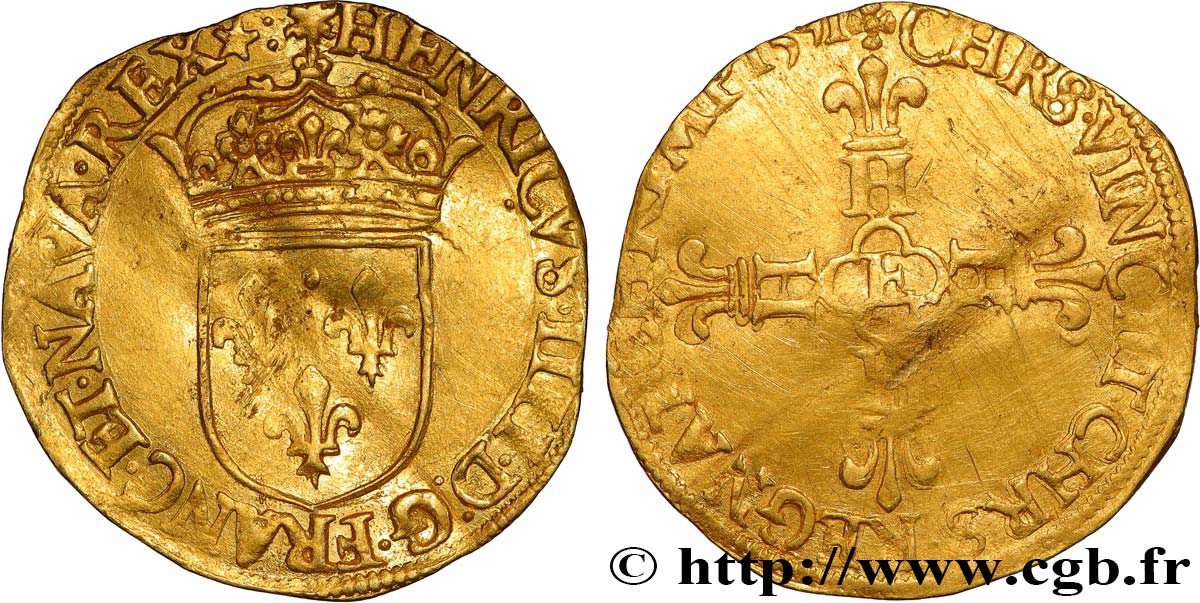
 对产品描述纠错
对产品描述纠错 打印
打印 分享我的选择
分享我的选择 提问
提问 Consign / sell
Consign / sell
 产品介绍
产品介绍